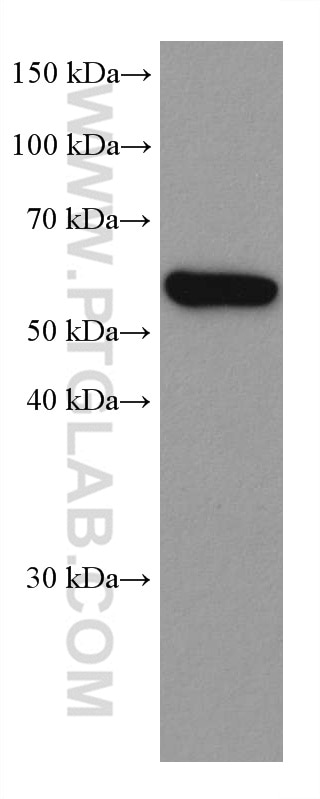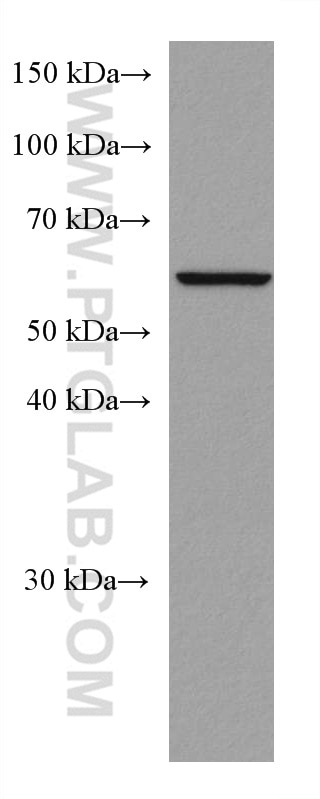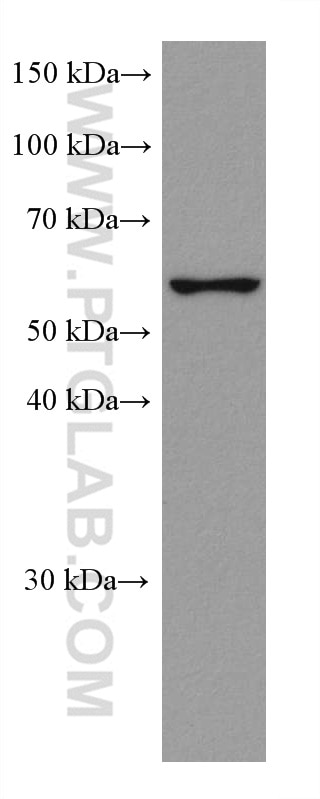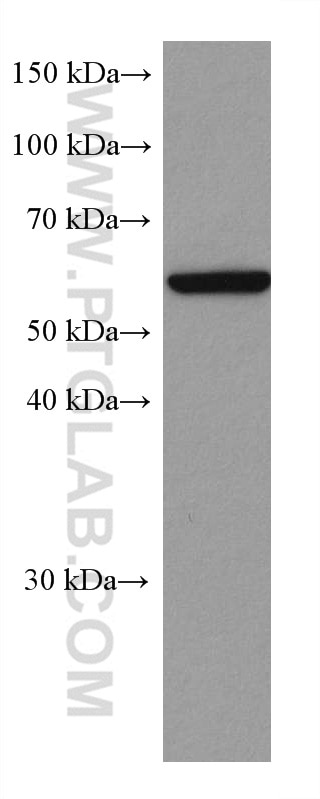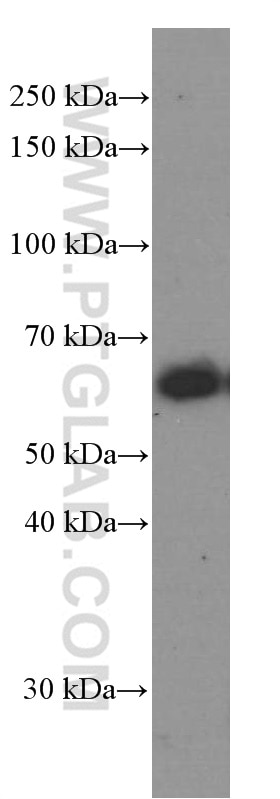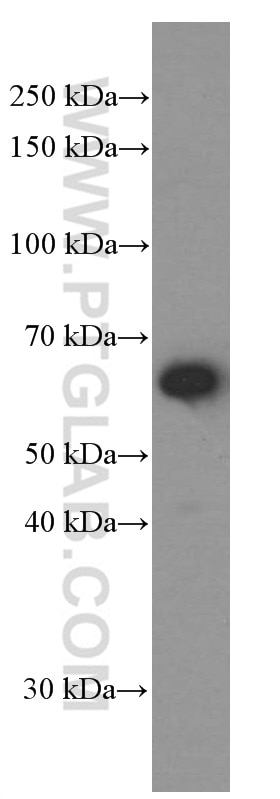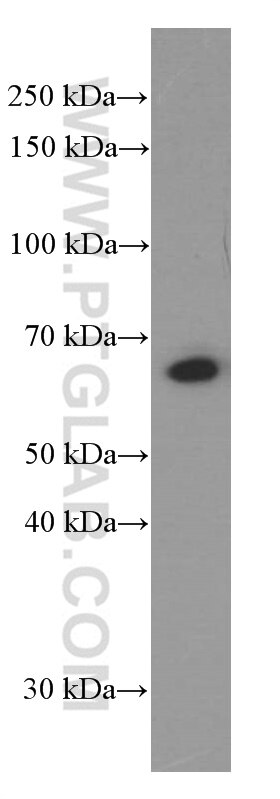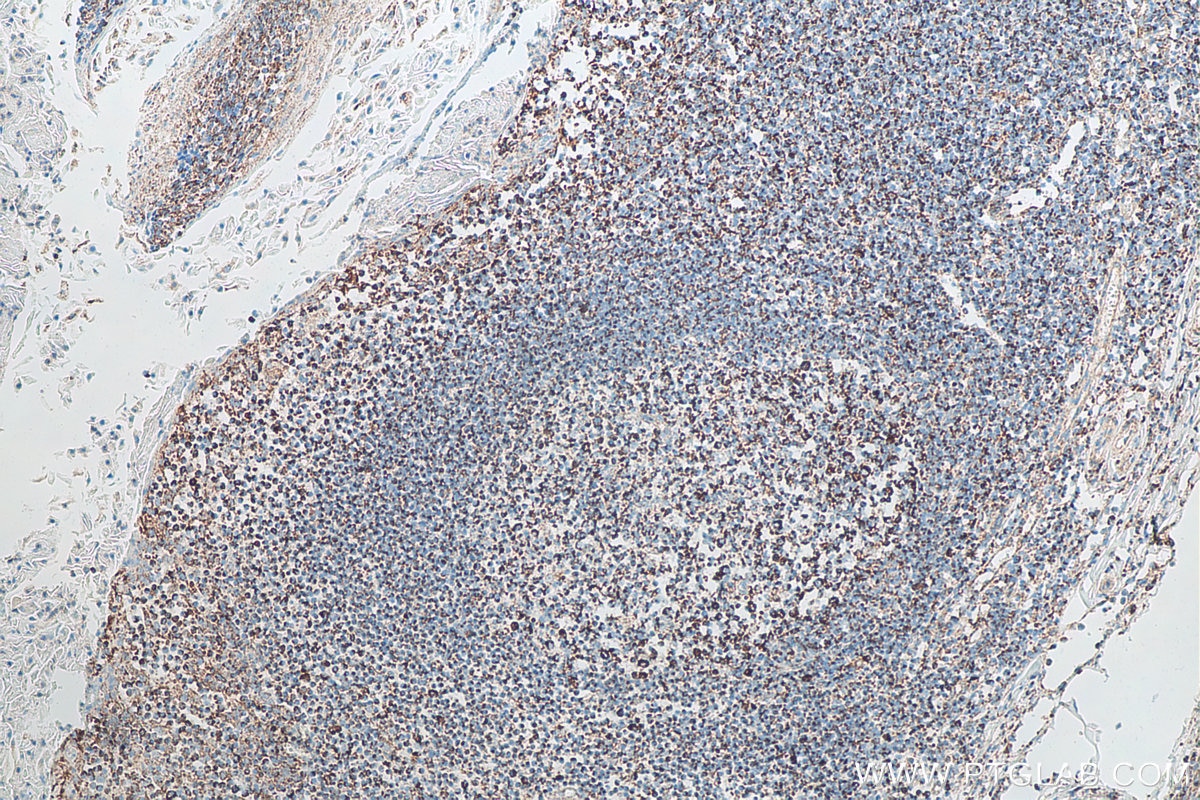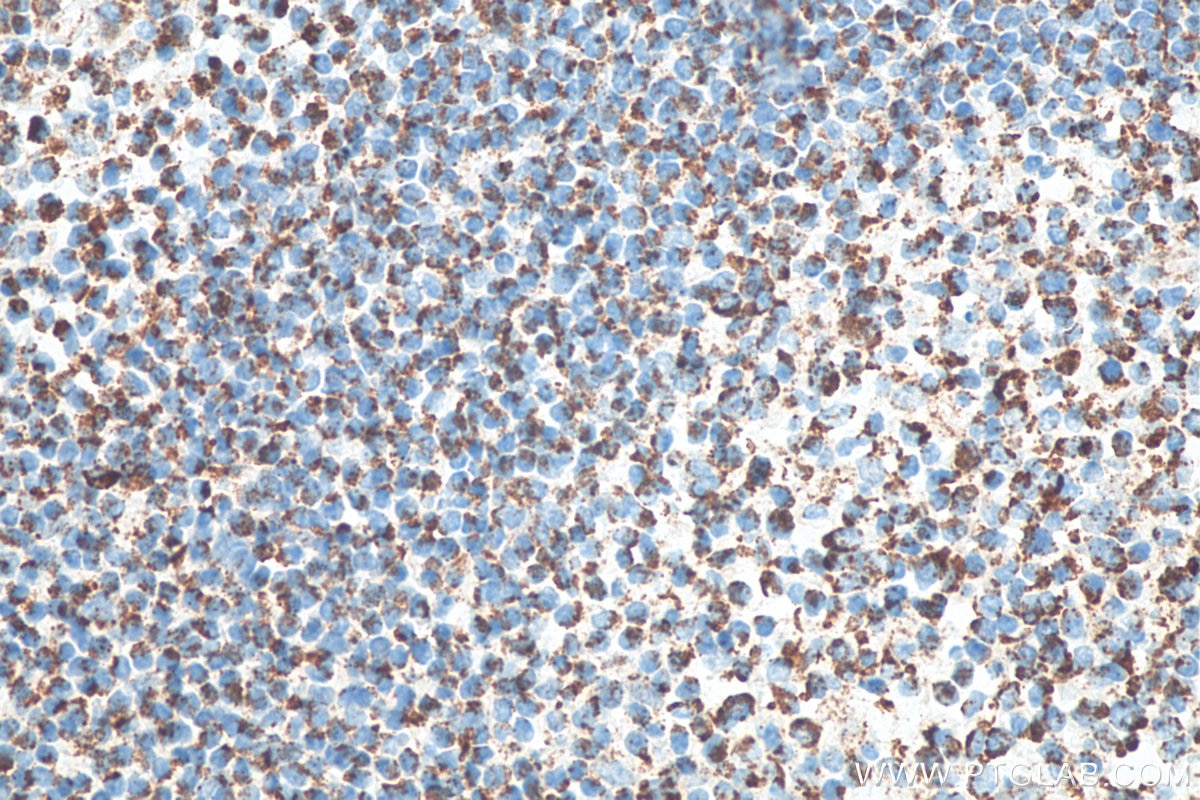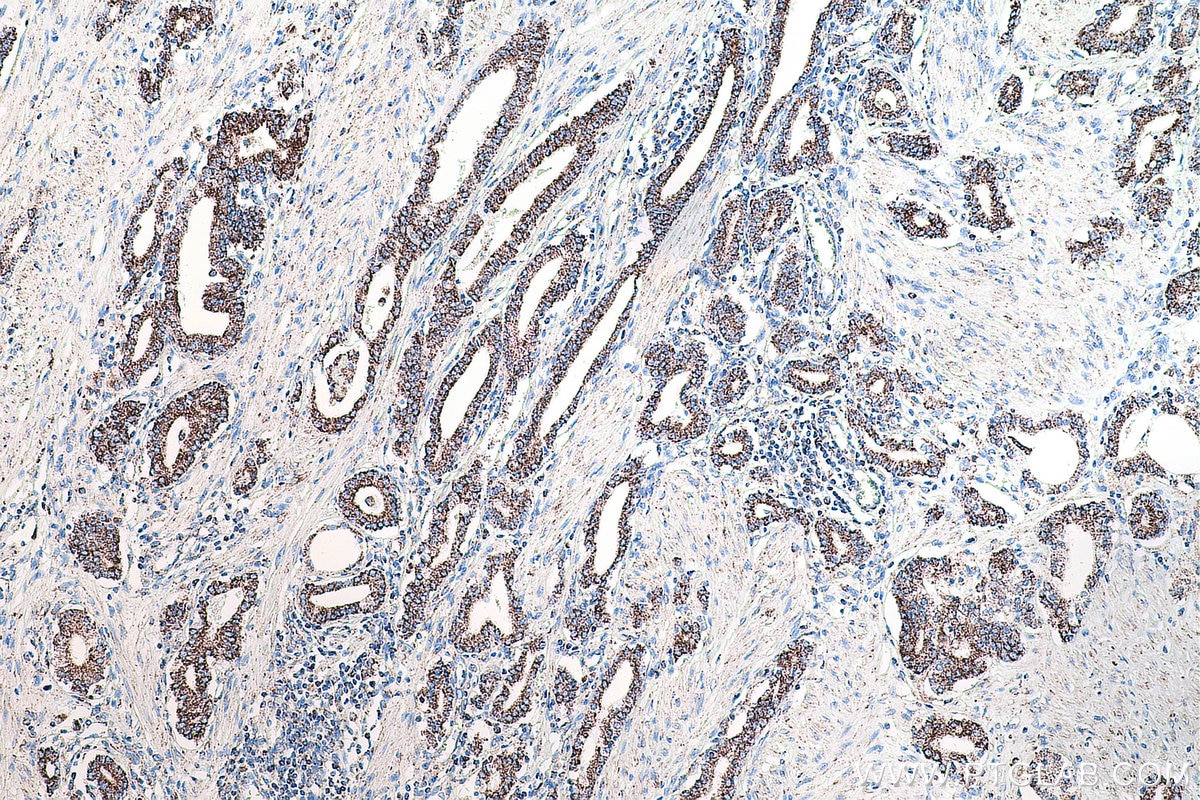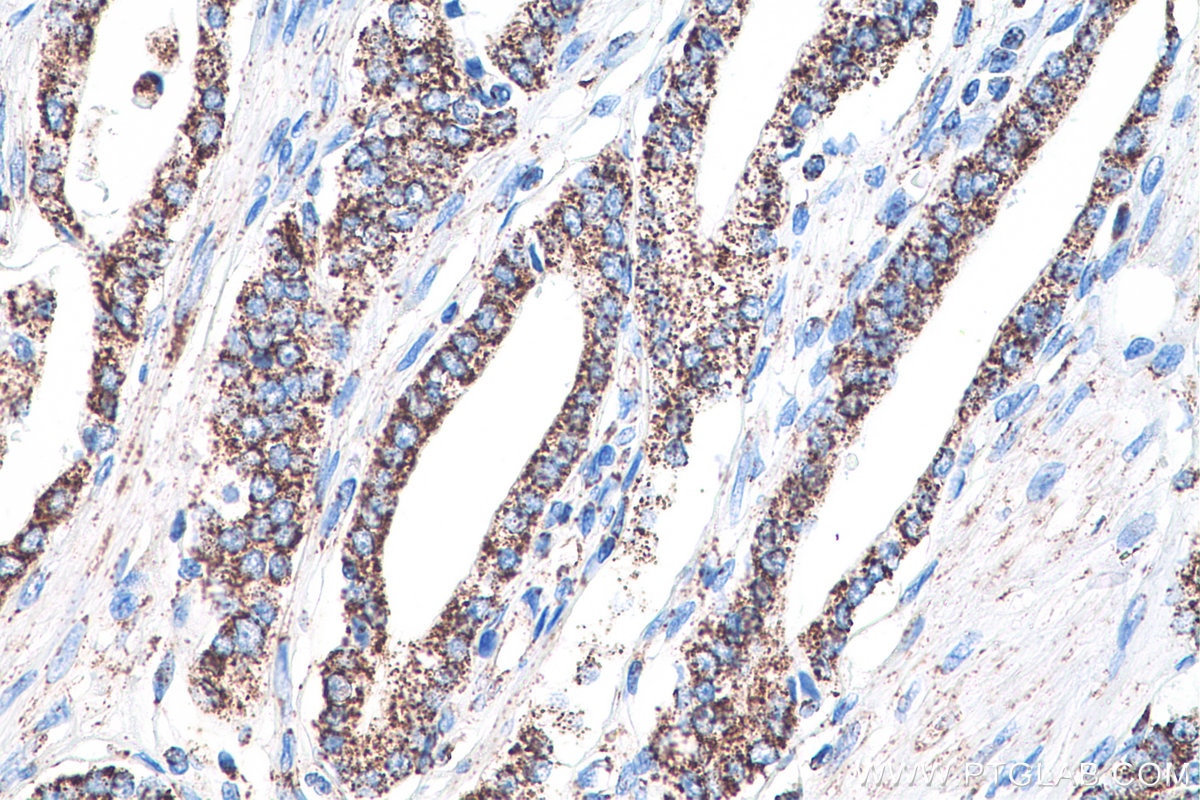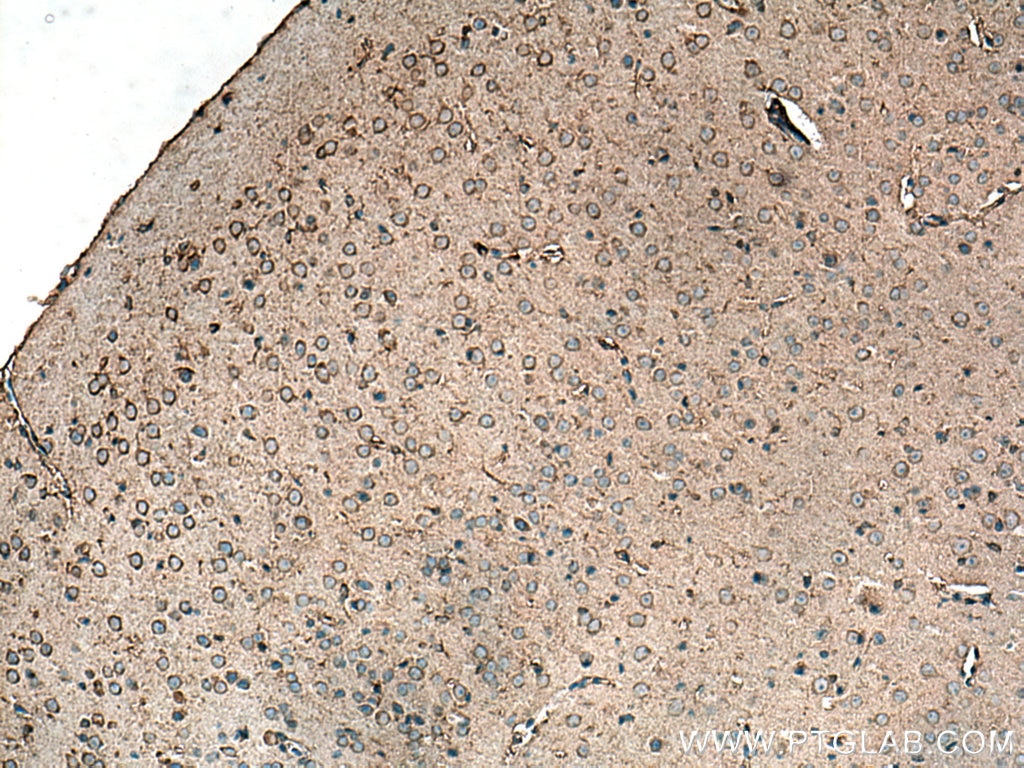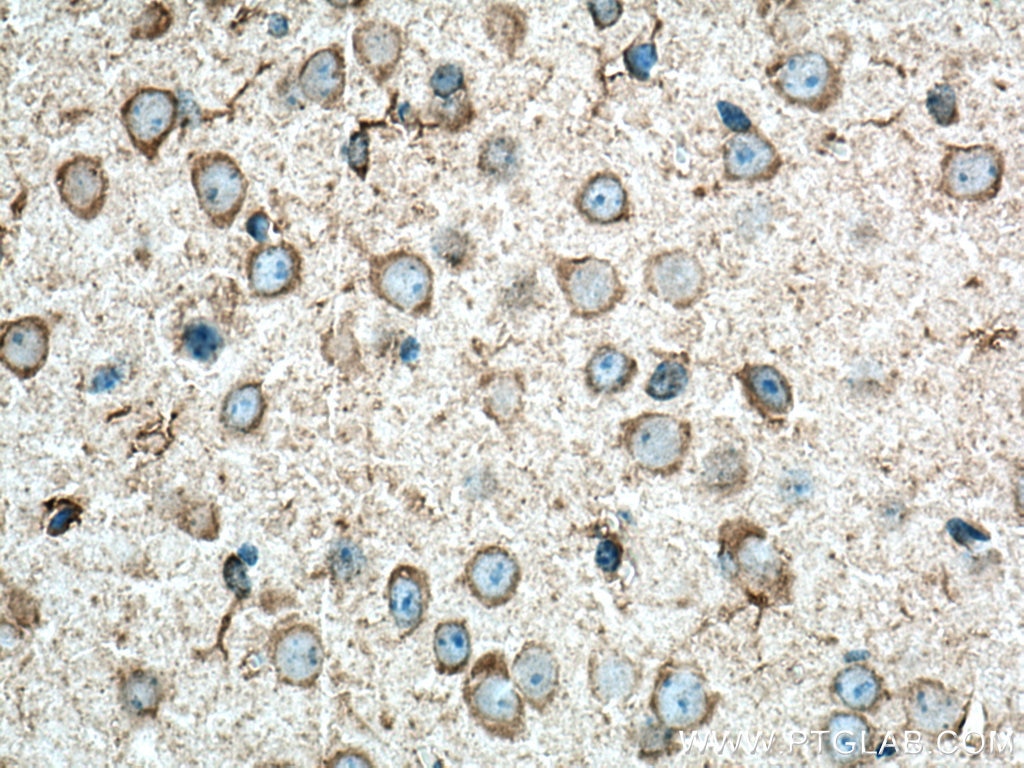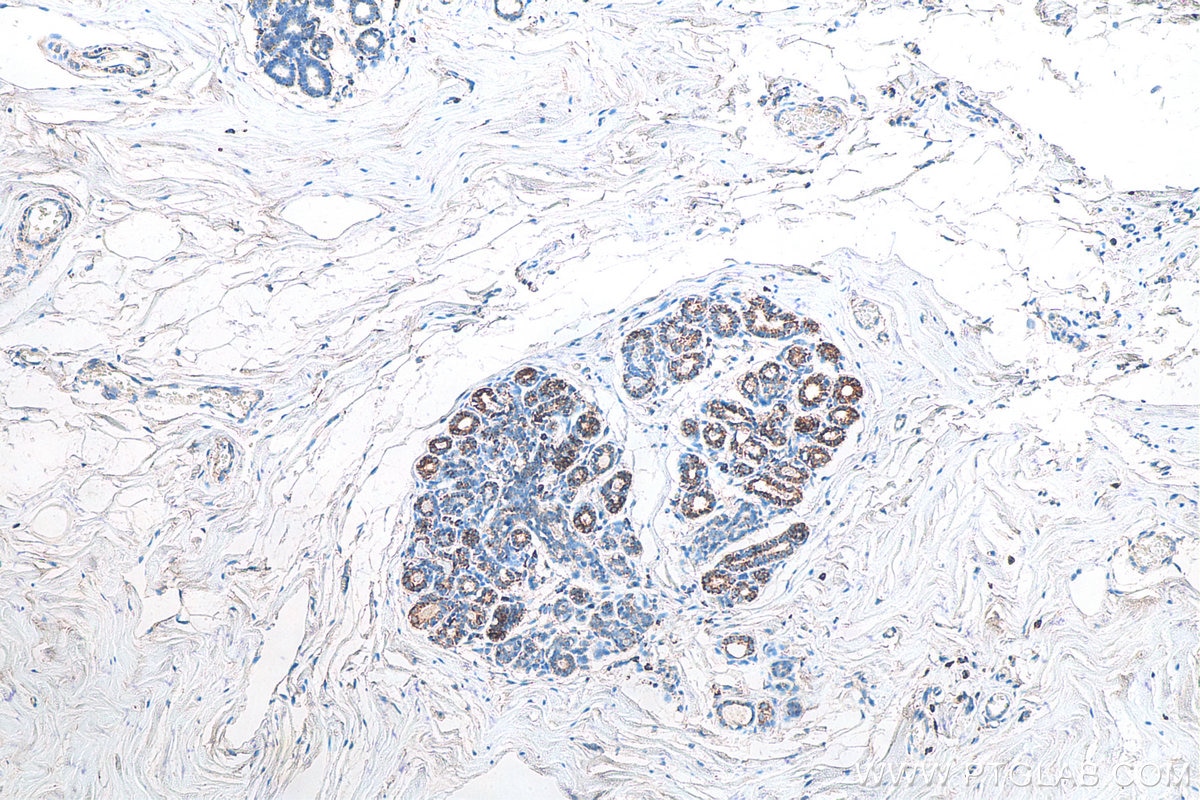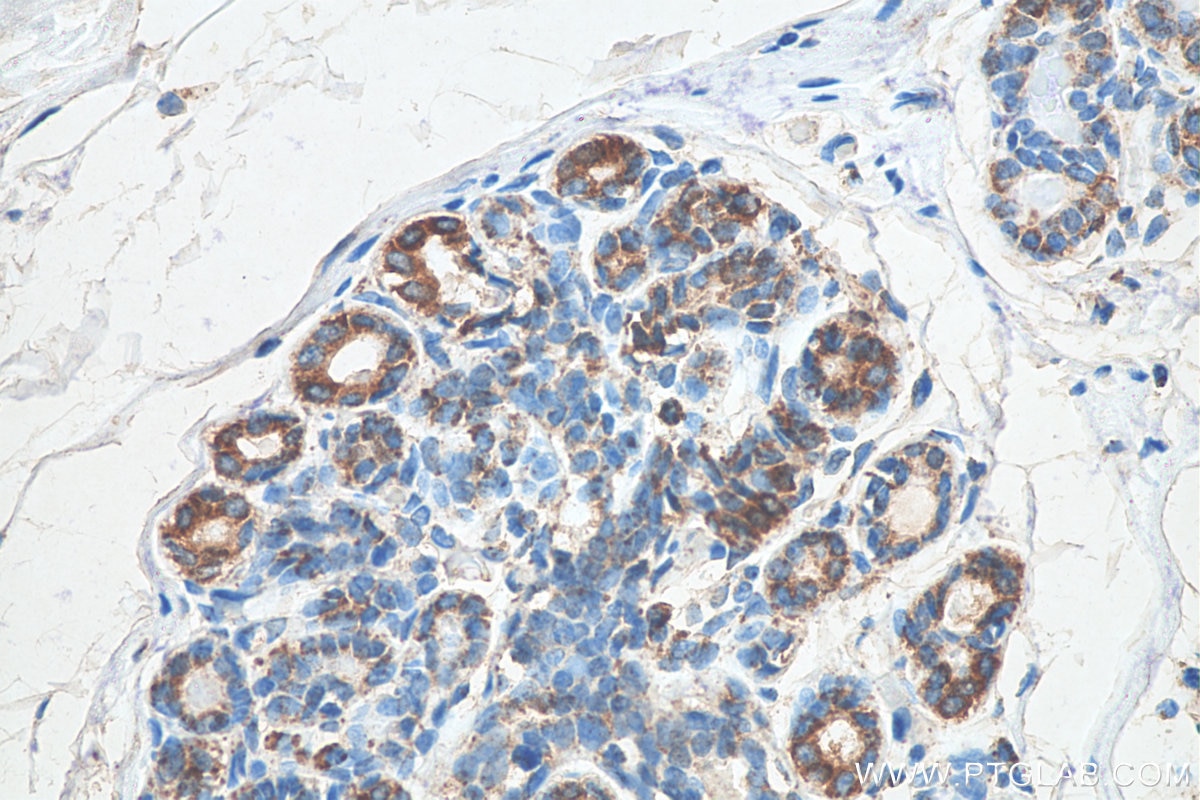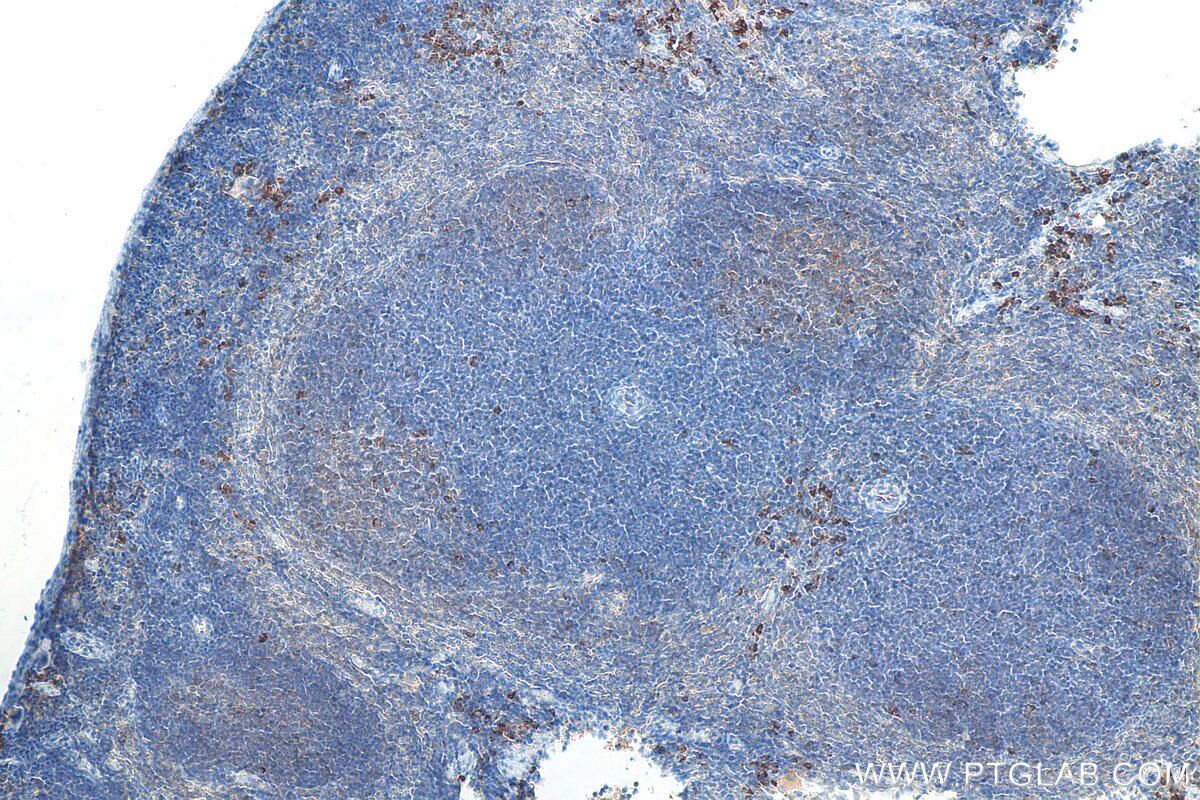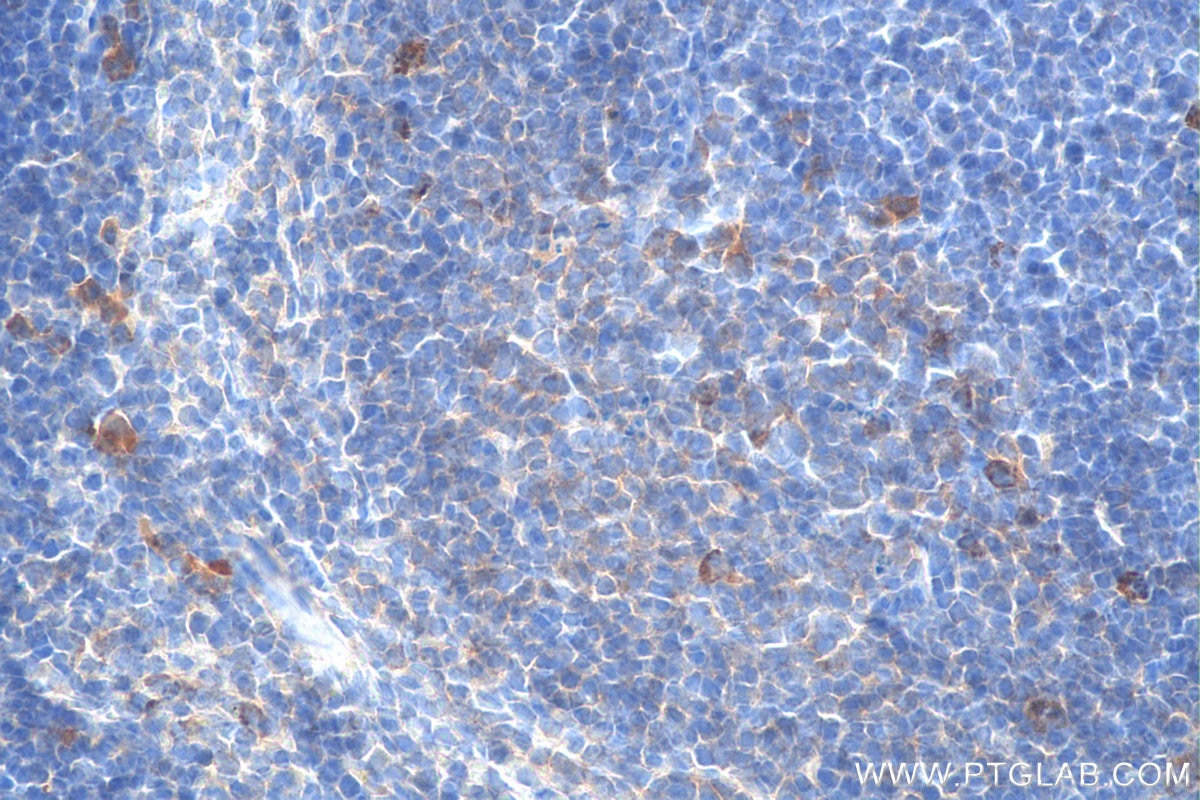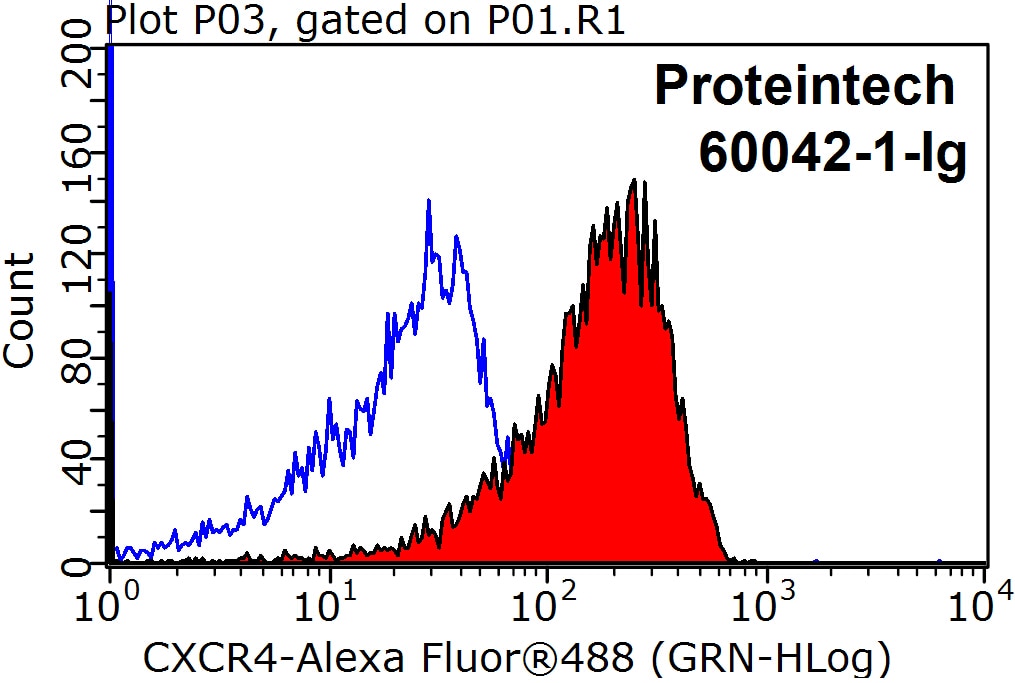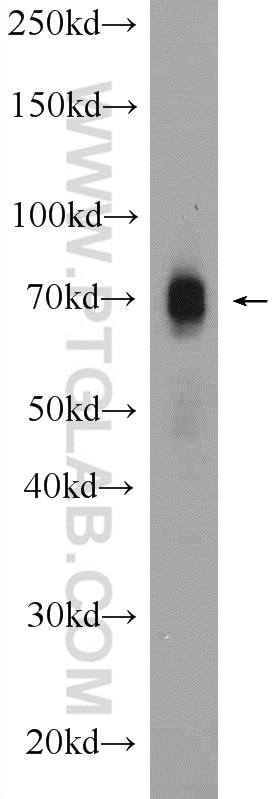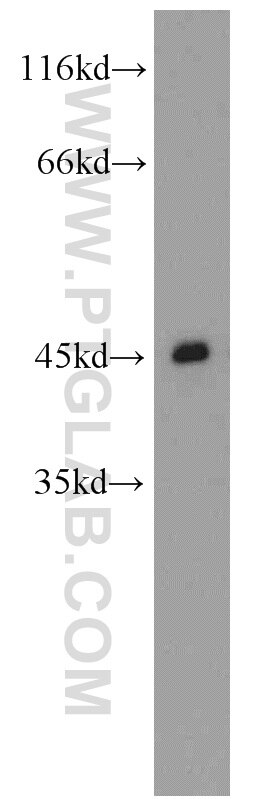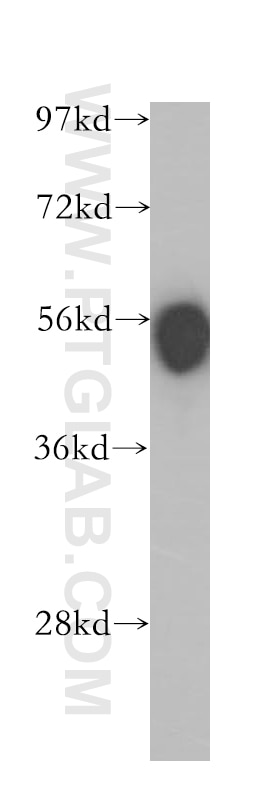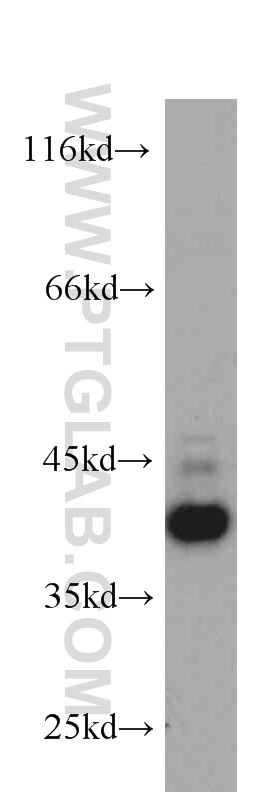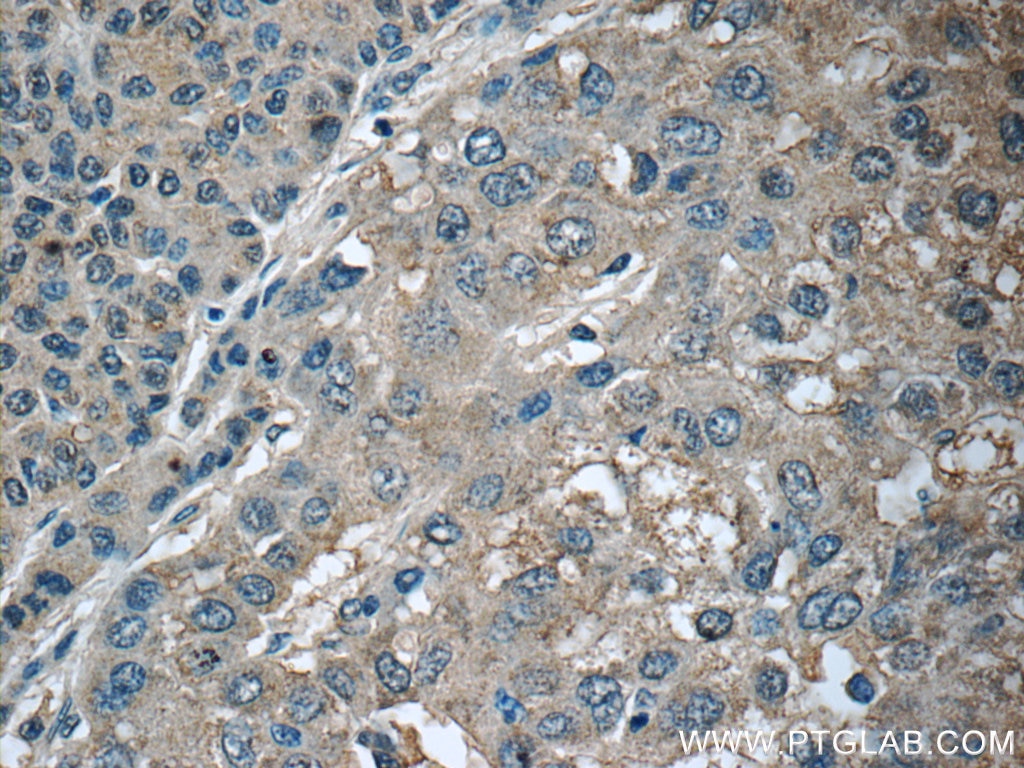- Featured Product
- KD/KO Validated
CXCR4 Monoklonaler Antikörper
CXCR4 Monoklonal Antikörper für FC, IHC, WB, ELISA
Wirt / Isotyp
Maus / IgM
Getestete Reaktivität
human, Maus
Anwendung
WB, IHC, IF, FC, CoIP, ELISA
Konjugation
Unkonjugiert
CloneNo.
4B5E4
Kat-Nr. : 60042-1-Ig
Synonyme
Galerie der Validierungsdaten
Geprüfte Anwendungen
| Erfolgreiche Detektion in WB | HeLa-Zellen, Daudi-Zellen, Jurkat-Zellen, K-562-Zellen, Ramos-Zellen, THP-1-Zellen, U-937-Zellen |
| Erfolgreiche Detektion in IHC | humanes Tonsillitisgewebe, humanes Mammakarzinomgewebe, humanes Prostatakarzinomgewebe, Maushirngewebe, Mausmilzgewebe Hinweis: Antigendemaskierung mit TE-Puffer pH 9,0 empfohlen. (*) Wahlweise kann die Antigendemaskierung auch mit Citratpuffer pH 6,0 erfolgen. |
| Erfolgreiche Detektion in FC | Jurkat-Zellen |
Empfohlene Verdünnung
| Anwendung | Verdünnung |
|---|---|
| Western Blot (WB) | WB : 1:1000-1:4000 |
| Immunhistochemie (IHC) | IHC : 1:300-1:1200 |
| Durchflusszytometrie (FC) | FC : 0.20 ug per 10^6 cells in a 100 µl suspension |
| It is recommended that this reagent should be titrated in each testing system to obtain optimal results. | |
| Sample-dependent, check data in validation data gallery | |
Veröffentlichte Anwendungen
| KD/KO | See 8 publications below |
| WB | See 35 publications below |
| IHC | See 8 publications below |
| IF | See 9 publications below |
| CoIP | See 2 publications below |
Produktinformation
60042-1-Ig bindet in WB, IHC, IF, FC, CoIP, ELISA CXCR4 und zeigt Reaktivität mit human, Maus
| Getestete Reaktivität | human, Maus |
| In Publikationen genannte Reaktivität | human, Maus |
| Wirt / Isotyp | Maus / IgM |
| Klonalität | Monoklonal |
| Typ | Antikörper |
| Immunogen | CXCR4 fusion protein Ag1528 |
| Vollständiger Name | chemokine (C-X-C motif) receptor 4 |
| Berechnetes Molekulargewicht | 352 aa, 40 kDa |
| Beobachtetes Molekulargewicht | 60~70 kDa |
| GenBank-Zugangsnummer | BC020968 |
| Gene symbol | CXCR4 |
| Gene ID (NCBI) | 7852 |
| Konjugation | Unkonjugiert |
| Form | Liquid |
| Reinigungsmethode | Caprylsäure/Ammoniumsulfat-Präzipitation |
| Lagerungspuffer | PBS with 0.1% sodium azide and 50% glycerol pH 7.3. |
| Lagerungsbedingungen | Bei -20°C lagern. Nach dem Versand ein Jahr lang stabil Aliquotieren ist bei -20oC Lagerung nicht notwendig. 20ul Größen enthalten 0,1% BSA. |
Hintergrundinformationen
C-X-C chemokine receptor type 4 (CXCR4) is a widely expressed G protein-coupled seven-transmembrane receptor. CXCL12/SDF-1 is the biological ligand for CXCR4. The binding of CXCL12 to CXCR4 induces intracellular signaling through several divergent pathways initiating signals related to chemotaxis, cell survival and/or proliferation, increase in intracellular calcium, and gene transcription (PMID: 20484021). CXCR4 also functions as a coreceptor for HIV-1 entry (PMID: 9427609). CXCR4 has a calculated molecular weight of 40 kDa. In addition to the predicted species of 45-47 kDa for glycosylated CXCR4 monomers, due to ubiquitination, dimeration, and different degrees of glycosylation, additional species can also exist and have been reported in some researches, including 67 kDa (PMID: 23917520), 55, 67, 87 kDa (PMID: 20028517), 80 kDa (PMID: 10506573), 47, 50, 62, and 98 kDa (PMID: 16204649).
Protokolle
| Produktspezifische Protokolle | |
|---|---|
| WB protocol for CXCR4 antibody 60042-1-Ig | Protokoll herunterladen |
| IHC protocol for CXCR4 antibody 60042-1-Ig | Protokoll herunterladen |
| FC protocol for CXCR4 antibody 60042-1-Ig | Protokoll herunterladen |
| Standard-Protokolle | |
|---|---|
| Klicken Sie hier, um unsere Standardprotokolle anzuzeigen |
Publikationen
| Species | Application | Title |
|---|---|---|
Nat Commun HIF-1α-PDK1 axis-induced active glycolysis plays an essential role in macrophage migratory capacity. | ||
J Exp Med CXCR4 regulates Plasmodium development in mouse and human hepatocytes.
| ||
Nanoscale Mitomycin C-treated human-induced pluripotent stem cells as a safe delivery system of gold nanorods for targeted photothermal therapy of gastric cancer | ||
ACS Appl Mater Interfaces Surface Functionalization of Polymeric Nanoparticles with Umbilical Cord-Derived Mesenchymal Stem Cell Membrane for Tumor-Targeted Therapy. | ||
Mol Oncol Growth arrest-specific protein 2 (GAS2) interacts with CXCR4 to promote T-cell leukemogenesis partially via c-MYC |
